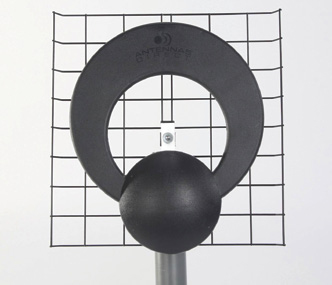Trending Up
Tom Butts
Editor-in-Chief
tbutts@nbmedia.comI’m not a fan of tired ole clichés but humor me on this one. I’m only going to say it once: to paraphrase an old saying, “rumors of the demise of broadcast television have been greatly exaggerated.”
We’ve seen the signs for months, even years. Sales of over the air antennas have greatly increased; Antennas Direct, one of the nation’s leading providers of TV antennas says its sales have effectively doubled every nine months over the past several years. Been to a Best Buy lately? Check out their growing retail TV antenna section if you want to really see what’s happening.
These facts are now being backed up by the results of a recent survey released by NAB last month. According to new research by GfK Media, one of the world’s largest research companies, the number of Americans now relying on over-the-air TV has increased to almost 54 million, up from 46 million just a year ago.
Who are these revolutionaries who dare to buck the pay-TV trend? Not surprisingly, the demographics of broadcast-only houses skew towards minorities and lower income families, but you can also count younger adults as well. Many of these are referred to as the “cord nevers,” most of them combining free broadcast TV with over-the-top services like Roku, Netflix and Xbox. A recent survey from Nielsen backs this up, showing that the number of homes with broadcastonly TV and OTTP grew almost 23 percent over the past year.
The GfK Media survey, “2012 Ownership Survey and Trend Report,” found that 17.8 percent of all U.S. households with TVs use over-the-air signals to watch TV, compared to 15 percent reported as broadcast only in 2011. Overall, GfK estimates that almost 21 million households representing 53.8 million consumers get their television exclusively over the air.
“As we’ve seen for the past few years, over-the-air households continue to make up a sizeable portion of the television viewing landscape,” said David Tice, senior vice president, GfK Media. “Our research reveals that over-the-air broadcasting remains an important distribution platform of television programming.”
ClearStream digital antennaThe survey also revealed that six percent of TV households—approximately 6.9 million households, eliminated pay-TV service in their current home at some point in the past and now rely on terrestrial broadcast rather than pay-TV. This is up from four percent of TV households, which had eliminated pay-TV service at some point in the past in the research firm’s 2011 study.
Minorities make up 44 percent of all broadcast-only homes, up from 40 percent in 2011 and homes headed by younger adults—24 percent of those households with a head of the household 18-34—are broadcast only, up from 17 percent last year. Twenty six percent of households with an annual income under $30,000 receive TV exclusively over-the-air.
These TV viewers have decided that pay-TV isn’t always worth the price. Another survey, released in late June from deal aggregation website TechBargains.com noted that 33 percent of cable and satellite subscribers who have cut the cord said they would never sign up again even if pay TV providers “drastically” reduced their prices.
Naysayers will continue to discount such survey results, conveniently forgetting that it’s not necessarily the numbers, but the trends, which all continue to go up. Hopefully, as broadcasters continue to roll out new services, including more DTV channels and Mobile DTV, many viewers will discover, while others will be reminded, of how important a robust, flexible broadcast system is to our nation’s media landscape.
In this issue, we welcome a new member to our roster of industry experts. Al Kovalick, who I’m sure many of you know, will be taking over our “Count on IT” column.
I’ve known Al for many years and have always enjoyed our conversations on the future of broadcast and its relationship with information technology. Al has an impressive pedigree, with 20 years of experience in video systems design, workflow evaluation and analysis. He wrote the first book in the field on converged AV + IT systems and file-based workflows (“Video Systems in an IT Environment; The Basics of Networked Media and File-Based Workflows;” see www.AVITbook.com for more information). Currently Al is the principal at Media Systems Consulting in Silicon Valley. Before that he was Technical Strategist and Avid Fellow at Avid Technology, CTO for Pinnacle Systems and Chief Architect of Video Servers at HP. Al is also a SMPTE Fellow and was awarded the SMPTE David Sarnoff Medal in 2009.


Get the TV Tech Newsletter
The professional video industry's #1 source for news, trends and product and tech information. Sign up below.
Tom has covered the broadcast technology market for the past 25 years, including three years handling member communications for the National Association of Broadcasters followed by a year as editor of Video Technology News and DTV Business executive newsletters for Phillips Publishing. In 1999 he launched digitalbroadcasting.com for internet B2B portal Verticalnet. He is also a charter member of the CTA's Academy of Digital TV Pioneers. Since 2001, he has been editor-in-chief of TV Tech (www.tvtech.com), the leading source of news and information on broadcast and related media technology and is a frequent contributor and moderator to the brand’s Tech Leadership events.

